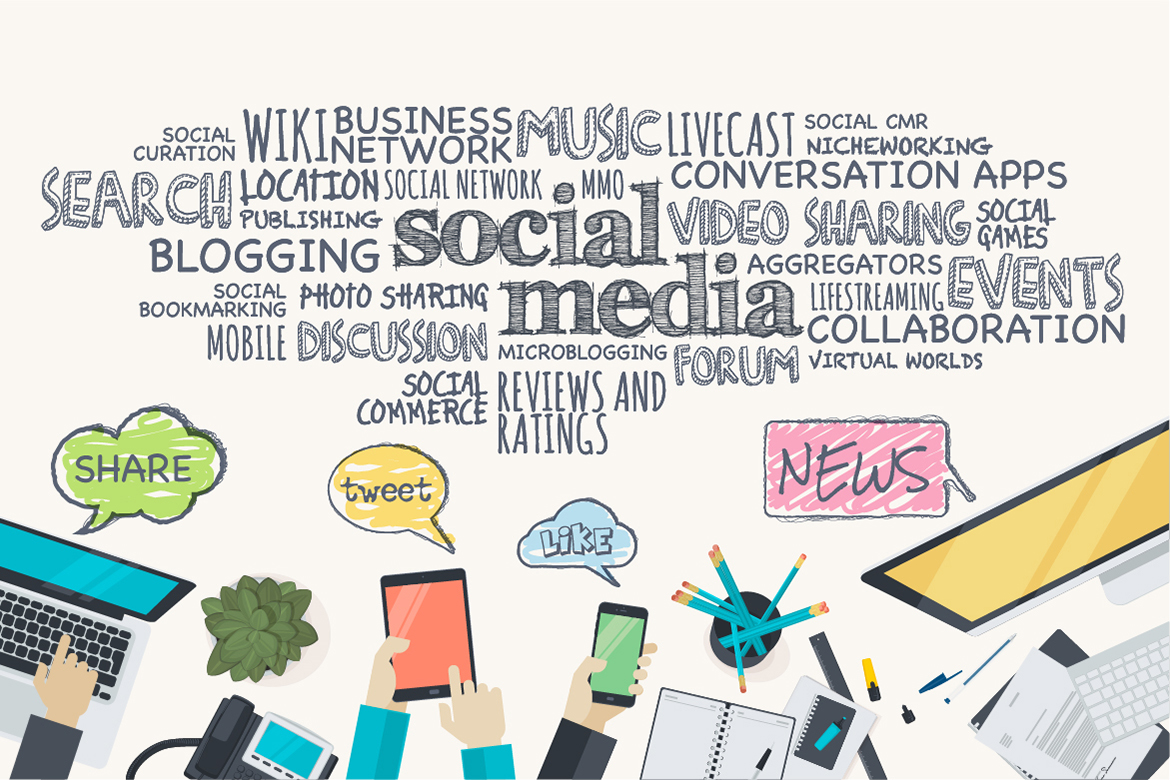The ultimate guide to employer branding

How great leaders attract top talent
March 14, 2022
Walking the talk on diversity and inclusion in the workplace
March 15, 2022
A strong brand identifies and distinguishes your company from competitors, and is an identity for the business. Branding helps establish the company as a credible and trusted business, and influences company reputation.
Employer branding is an equally important marketing strategy as it establishes the company’s credibility amongst employees and positions it as a desirable place to work at. The employer brand is a mix of the company’s vision, mission, culture and values, and impacts how the organisation is perceived in the marketplace by current employees, recruiters and potential employees.
Employer branding affects the company’s reputation and influences both talent acquisition and employee retention.
The need for an employer branding strategy
Attracting the best talent and keeping employees engaged play an important role in the company’s growth and success. Here are some reasons why companies should focus on building their employer brand:
Employer branding helps to draw top talent and stay competitive
According to a Glassdoor survey, 75 per cent of the people are likely to apply for a job if the organisation actively builds its employer brand. Also, 86 per cent of job seekers are likely to look up the ratings and reviews about companies before they apply for a position.
Employee retention is higher
when companies consciously give credence to branding. Focused employer branding helps potential candidates gauge if they fit into the work and people culture. This eventually increases employee engagement and retention.Mergers, acquisitions and spin-offs can create uncertainty for employees, some of which can be mitigated by a compelling employer brand. For instance, when Cognyte, a security analytics software firm, spun off from its parent company, it ensured that it retained a strong narrative of the employer brand which was already well-established. By doing so, the business showed respect and loyalty to the existing brand and employees whose enthusiasm also boosted brand awareness. This, in turn, created a sense of trust amongst potential new employees.

Cost per employee is reduced when hiring. Recruiting costs drop when employees are keen to work with a company, and it becomes a faster process. Employee referrals are a powerful way of drawing talent. An established employer brand encourages employees to recommend the organisation to their professional and personal networks. This is far more effective for hiring, in terms of time and money, as compared to the cost and effort involved in typical recruitment cycles .
Managing the employer expectation gap is easier with a solid employer branding strategy, which also helps to establish a company culture in line with employee expectations.
Let’s now take a look at how to create an employer brand.
Eight steps to building your employer brand
A good employer branding strategy will manage and influence company reputation. Follow these steps to build your employer brand:
- Know where you stand: Before you begin, you need to understand where the organisation is with respect to current employee branding, employee opinions and your reputation as an employer in the outside world. There are a number of ways to do an employer brand audit—in-person and online employee reviews, surveys, brand engagement on social media, employee experience surveys with respect to recruitment and onboarding and so on. External agencies can be hired to do a brand audit so that it is impersonal and presents the true picture.
- Design your employee branding strategy: Create an action plan based on the findings of the employer brand audit and the current work environment. The employer brand should echo company values and culture and the corporate brand. The brand strategy needs buy-in from top management, which should also be presented to all employees and stakeholders, so that everyone is on the same page. A highly connected world makes it imperative to have a digital employer branding strategy — one that will reach out across all digital channels.
- Set employer branding goals: This is a good time to ask a few questions to understand why this exercise is important to the company and define what you want your employer brand to be.
-
Ask yourself:
- Do we want to build more brand awareness?
- Do we want better quality candidates?
- Do we want more applicants?
- Do we want better employee reviews online?
- Does our employee brand echo our core values?
- Do we want to improve candidate engagement? … and so on.
The answers to such questions will help establish the objectives of your employer brand strategy.
- Define your Employee Value Proposition (EVP): The Employee Value Proposition or EVP is the value offered by the organisation to the employee and is a significant determinant for talent acquisition and employee retention. For example, Google’s EVP headlines as “How we care for Googlers” and lists health and wellness, financial wellbeing, flexibility and time off, and family support and care including parental leave. A clear definition of the EVP helps align employer branding with employee expectations.
The COVID-19 pandemic has caused an abrupt rewrite for organisations across the globe, causing disruption at the workplace. Employee expectations have changed due to uncertain times and new models of working. The EVP needs to evolve to accommodate requirements of remote workers. Attractive compensation packages, flexible schedules that facilitate time off for child care, mental health awareness and support, and fostering connections between employees can all be part of the EVP. Retention is easier when the company offers things that matter to employees. In fact, Google’s EVP clearly lists a hybrid work model and four “work from anywhere weeks” under employee benefits.
- Assign responsibilities for brand building: Once your employer brand strategy is in place, after revisions based on discussions with all stakeholders, you need to assign responsibilities for brand building. Share your employer brand within the company via internal communication to create excitement amongst existing employees.
Identify groups or individuals who will help HR teams disseminate information about the employer brand. This can include employees, recruitment teams and external recruiters or brand building agencies, who will form the community of employer brand ambassadors. At the same time, you need to have a consistent narrative so that you send a common message.
- Identify channels to promote your employer brand: Taking the employer brand to market means that you need to understand where potential candidates spend much of their time — on online job boards or social media platforms such as LinkedIn, Facebook or Instagram. Use recruitment marketing to create the right message to help you raise your brand awareness on the right channels, including but not limited to social media, career sites and company career portal.
- Implement your employer brand strategy: Taking the employer brand to market is a multi-pronged exercise. Involve old and new employees to share their experiences via video interviews. Get your employees to update their job profiles on business networks. Make onboarding of new employees hassle-free so that new recruits carry a good first impression and help spread the word amongst other potential employees. Engage with potential candidates via social media and career sites and use virtual hiring platforms to respond to queries quickly.
Regularly update the career pages on the company website to reflect job postings and employee speak. Highlight the EVP, employee testimonials, career path and core values of the company. Responding to online reviews shows that you care about your reputation as an employer. In a Glassdoor survey, 75 per cent users said they would be willing to apply for an open job posting for companies that are active on Glassdoor and reply to online reviews.
- Measure employer branding success: Considering the amount of time, effort and money spent on employer branding, and the fact that it is an iterative process, it is important to identify the right metrics to track success right from the start.
Identify the key performance indicators (KPIs) that you are going to use, as also the systems and processes that will help gather the data. The KPIs will be determined by the goals and action plan. Some of the most frequently used metrics include job offer acceptance rate, time to hire, cost per hire, quality of hire, hiring manager satisfaction rate, employee retention rate, new hire retention rate, win/lose ratio, ratings on sites such as Glassdoor or Indeed, employee referrals, and candidate engagement on digital channels.
Ideas to build your employer brand
The pandemic caused the corporate world to turn turtle, and resulted in disruptions to recruitment and hiring. Virtual recruitment and onboarding have become part of the new normal, and companies need to adapt themselves. Also, with greater emphasis on remote and hybrid work, companies need to rework their employer branding ideas and strategies to be able to attract key talent. Here are some ideas on how to do it:
- Building a digital employer brand will not only create a strong digital presence but also attract Gen Z and millennials. A study by MIT Sloan Management Review and Deloitte revealed that 70 per cent of employees want to work for digitally mature organisations.
- Active social media engagement is necessary to attract both top talent and newbies. In a Glassdoor survey, 68 per cent of millennials, 54 per cent of Gen X, and 48 per cent of Gen Z said they check the employer’s social media channels to evaluate the employer's brand. Social media channels can be used to promote company culture and your unique employee value proposition, and to bolster your brand. Use platforms like LinkedIn to promote your employer brand; post engaging content to attract potential employees.
- Gamification in recruitment can be used to actively engage with potential employees. Candidates can get a realistic preview of a job, maybe look at alternative roles and even decide whether a specific job role will suit them. For example, Marriott International launched a recruitment game called ‘My Marriott Hotel’ on Facebook, which lets candidates experience managing a hotel kitchen by creating their own virtual restaurant, before moving to other areas of hotel operations. In a TalentLMS 2019 Gamification at Work survey, 78 per cent of the respondents said gamification would make the recruitment process more desirable.
- Career portals have been around for a while, and they have come a long way. Prospective candidates refer to reputed career portals to check both ratings and reviews. Career portals also have personal pages for employers where they can share their EVP, product releases, milestones and other content, as well as links to social media profiles. They help amplify the employer brand.

Employer branding is an ongoing process
The last couple of years have been witness to an upheaval in work models. From virtual hiring and onboarding, and revising EVPs, to taking care of remote workers, HR teams have had their hands full. While employer branding has always been acknowledged as being necessary, it assumes even more importance in view of the disruptions to the workplace. At Careernet, we work with you to establish a robust employer branding strategy that will help attract and retain top-tier talent. Our virtual hiring solutions will help to ease out online recruitment and measure the success of your efforts.To stay competitive, companies require the best talent, which makes it necessary to strengthen employer brand and fine-tune employer brand strategy.


